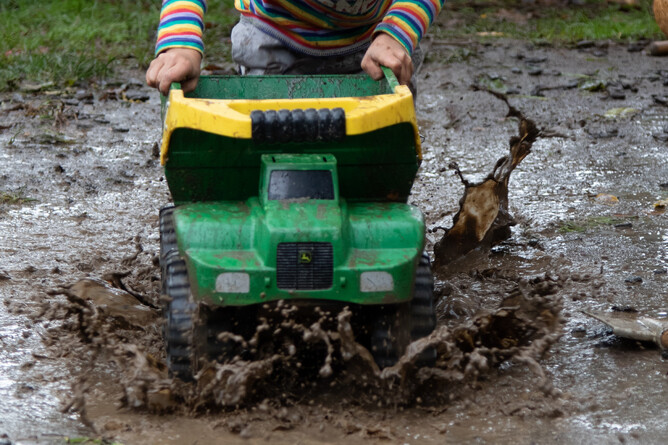Setting boundaries for children gives them the knowledge and security of your expectations within their day. This means they (for the most part) can predict what is coming next. Children often thrive within predictable, solid boundaries. You may find it difficult at first, but boundaries can make your life easier.
Non-Negotiable Boundaries
What daily things in your life are non-negotiable? Here at Oma Rāpeti, we call them "red lights". These are things that need to happen, and your child doesn’t get a choice about them.
Examples are:
- Wearing a seatbelt in the car
- Leaving the stove/oven/sharp knives alone
- Holding hands when we cross the road
All of these are things that have to do with safety, and are usually things that the child might not be aware are necessities just yet. These non-negotiable things are hard lines that we draw, and we have the ability to say “no, we have to do this” to our children, even when they don’t want to do it, because it keeps them safe.
The language we use around things like this is firm and explanatory. An example would be: "Joe, I am going to take the [name] away now, because it is not a safe item to play with". If your child was to cry and get upset, simply acknowledge their feelings: "I can see you are feeling really frustrated I took that away", and restate why: "It is not a safe object to play with".
Some of the trickier situations are when you can't remove the risk. An example could be an infant naturally exploring and playing with a power point or switch. In this situation you could simply cover the power point with your hand and state firmly and calmly "I'm not going to let you play with that Freddy, it is not safe." Your child may grizzle and pull at your hand, but you can simply restate this same message. Your child will soon get the idea and move away from the risk, naturally becoming interested in something else.
Children and Choice-Making
Often it is easy to say no when your child's safety comes into play. It can be harder to set boundaries and stay firm throughout the day with things that are not set in stone. This might be leaving somewhere when you say it is time to go, what clothes they wear or the food your child is eating. You may find it easier and faster to not give your child options in these situations; but by giving options you can easily negotiate situations where your child is pushing back. Life is often much easier for you, and your child if you create choices.
As teachers, we will have the outcome of a particular scenario in mind. For example, the child needs to have their nappy changed. We will offer multiple choices, all of which end up at the outcome that we want, but offering a choice to the child gives them ownership of the choice that led them there. Following on from our nappy change example, this might be something along the lines of "would you like me to change your nappy, or [another teacher]" or "would you like to walk to the wharepaku [bathroom], or would you like me to carry you?". Two choices is the easiest. It is often faster to as they feel more empowered.
The choices you offer must be reasonable. For example: "Lucy, I can see you really don't want to get in the car today. We need to get going, so you can either climb in yourself, or I can lift you in."
But what do you do if your child doesn’t want to choose between the choices you’ve given them? What can you do next to follow up?
After allowing your child reasonable amount of time to make the choice themselves, you will make the choice for them, explaining as you go. Make sure you pause during these choices so your child has time to process and decide.
For example: “Lucy, you have two choices." (pause) "Would you like to climb in?" (pause) "Would you like me to lift you in?" (pause) If your child has not yet responded, then "You are not choosing, so I will choose for you." (pause) "I will lift you in."
It works.
You need to follow through on your word and remain confident in the options you have given. This could be tough initially if your child is not used to boundaries as they may push back, and likely large emotional outbursts as your child adjusts to not getting their way all of the time, but it gets easier. The more you follow through and do what you say you’re going to do, the more weight your word will carry, and the less stressful both your lives will be.
Boundaries and limits are good for children. The Educaring ®️ Approach guiding principle is consistency. As adults this means we develop clearly defined limits and communicate our expectations to develop discipline. They provide a safety net that children can find the edges of, which grows as they mature, allowing them a greater view and greater responsibilities as they mature and can handle them.
Stand strong. Never say anything that you’re not willing to follow through on. Always follow through what you say, and remember, it’s always okay to ask for help, or to remove yourself from a situation if you’re getting frustrated.
Set your boundaries and then allow your child to find freedom within that boundary.
Aroha nui,
The Oma Rāpeti Team
Co-written by Emily, Malenka & Nikki
Want to hear more?
Send us a message using the get in touch page and join our mailing list. We send out a quick email once a month, letting you know of any new blogs up.
Keep reading some of our other blogs on parenting here, with how to get your child to eat.


